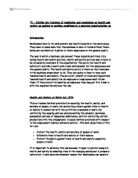What are Pressure Systems?
Pressure systems are equipment or system containing a fluid either gas or liquid under pressure.
Pressure systems/vessels could range from boilers to valves, steam traps and filters.
The Pressure System safety Regulations 2000 defines three specific systems.
Minor systems, these are small systems for example a valve. Usually producing 20bar of pressure.
Intermediate systems are mostly storage and processing systems an example will be boilers and steam heating systems.
Major systems are huge systems and complex also mostly containing hazardous chemicals. This includes steam generators or any pressure storage system with high pressure volume.
The regulation requires all pressure systems to have a written scheme of examination. A written scheme examination is a piece of document enclosing information about selected items which form a pressure system or under pressure containing fluid.
The Pressure System Safety Regulations 2000 states that anyone designing manufacturing, imports or supplies any pressure systems must ensure the system is properly designed and constructed from a suitable material to prevent danger. Also the regulation states the system should have a protective devices to prevent danger. Not only does the regulation the safety of employers also it also ensures employers have adequate and suitable instructions for the safe operation of the system and action to be take in the event of an emergency.
Pressure Equipment Regulations 1999
The Pressure Equipment Regulation 1999 is a legislation from the European Union its concerned with the design, manufacturing and the installation of pressure systems. But the regulation does not apply to pressure equipment and assembly placed on the market before November 1999. The Pressure Equipment Regulations 1999 was introduced to bring together national laws regarding the design, manufacturing, testing of pressure equipment. Its aim is to ensure that pressure systems are put on the market without any complications. The legislation covers both small and large manufactures, this will benefit both parties at the same time facilitate the application of new technologies. In the UK there are large number of standards that have been harmonized under European regulations, using a relevant standard pleases most of the conformity. On the other hand third part testing is still compulsory in most cases, so by bringing together all standards and merging them into one will save time as well as money. Standards can also help you to work better with suppliers because they’ll also have the same standard as well as requirements.
The Control of Noise at Work Regulations 2005
The control of Noise at Work Regulation 2005 was introduced to ensure that workers hearing are protected from excessive noise during work, which can cause them to lose their hearing. The regulations states employers most ensure a daily or weekly personal noise exposure of 87dB and peak sound pressure of 140dB. Above these values the employer must provide protection. The area must therefore be assessed and ensure that the area is designated a Hearing protection zone, the area is labelled and identified by clear signs indicating that ear protection must be worn at all times.
Control of Substances Hazardous to Health Regulations (COSHH)
Control of Substances Hazardous to Health is a health regulation that was enforced in 2002 to protect people from ill health caused by exposure to hazardous substances. The regulations demands employers to assess the risks to employee’s health during working hours and decide what precautions are to be taken to prevent ill health, or to control the exposure by providing readers to each employer. Employers are also required monitor and carry out health risk assessments if needed, in result of an exposure. Furthermore employers are required to inform, train and supervise employees in result of an accident.
What is a Hazardous Substance?
Substances can be in many forms not only chemicals, but fumes, dust, vapours, mists, nanotechnology, gases, biological agents in the form of germs. COSHH does not cover asbestos or radioactive substances.
Anyone working with or exposed to hazardous substances are at risk. Exposure to hazardous substances for long periods of time can cause lasting damages. The main aim should be to reduce or prevent exposure to hazardous substances. Where exposure to dangerous substances cannot be avoided, then controls should be put in place in order to assist workers.







